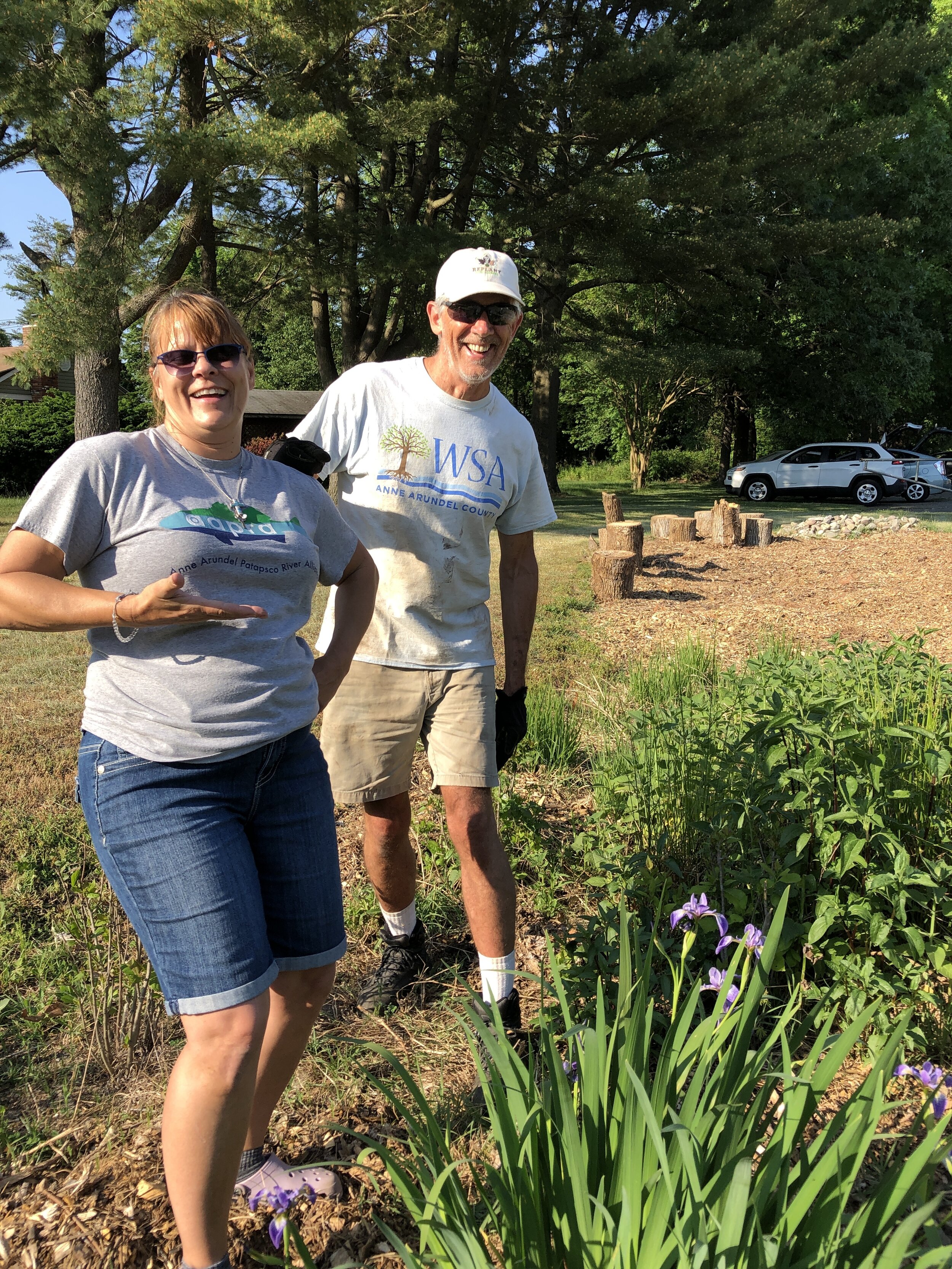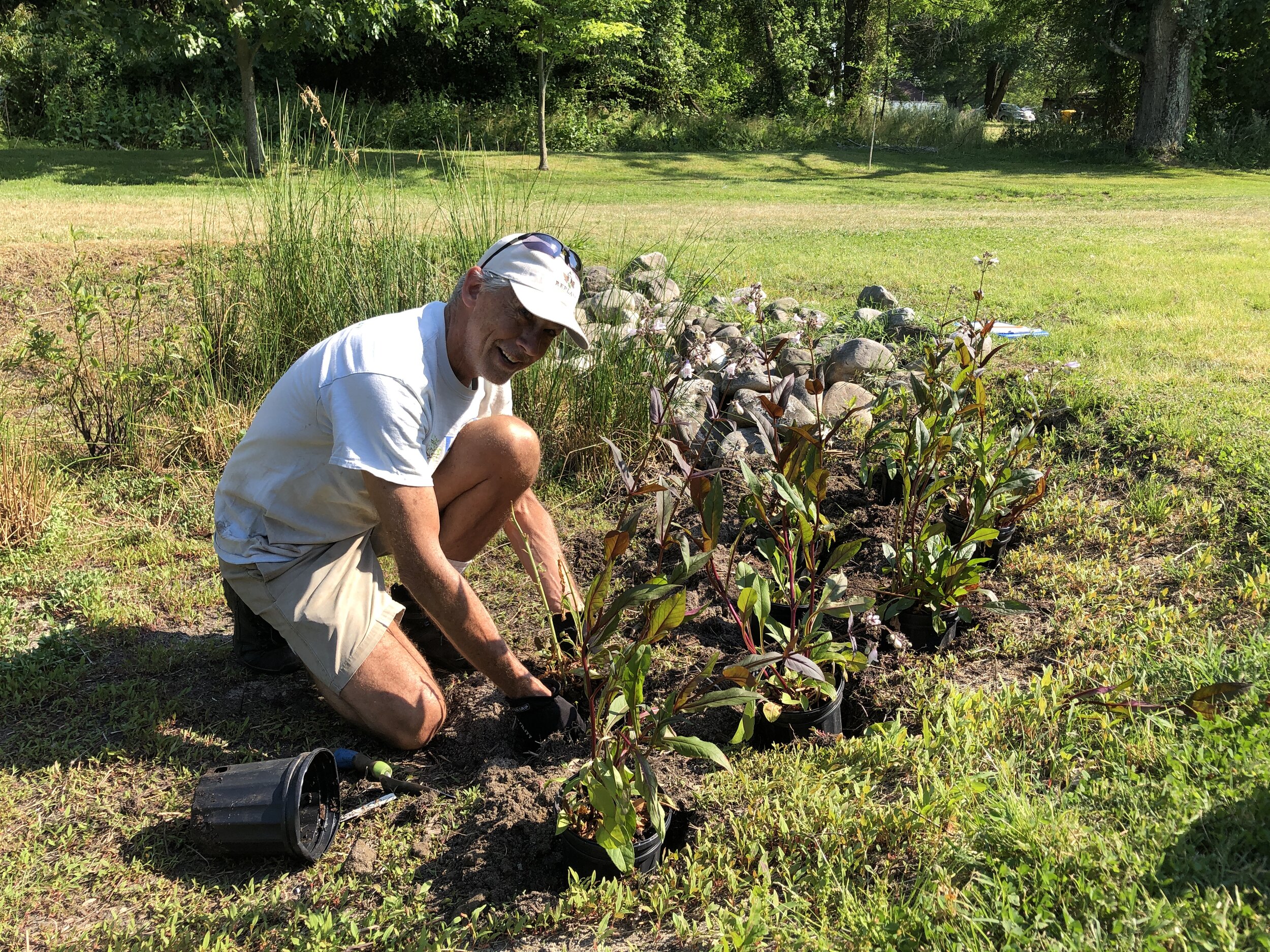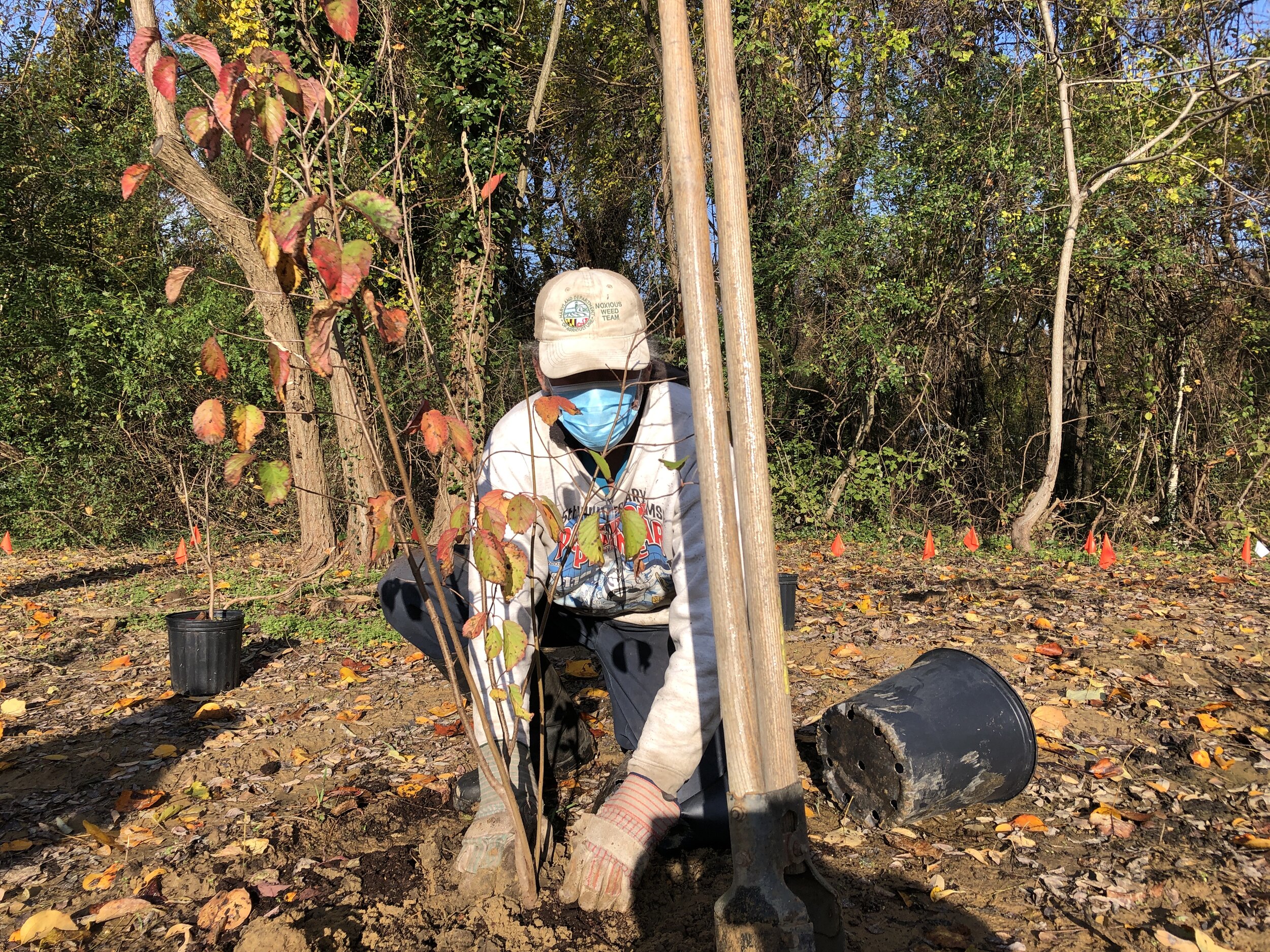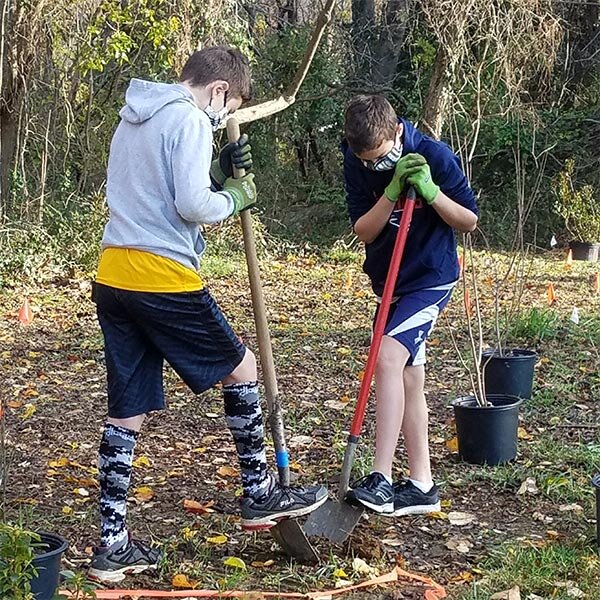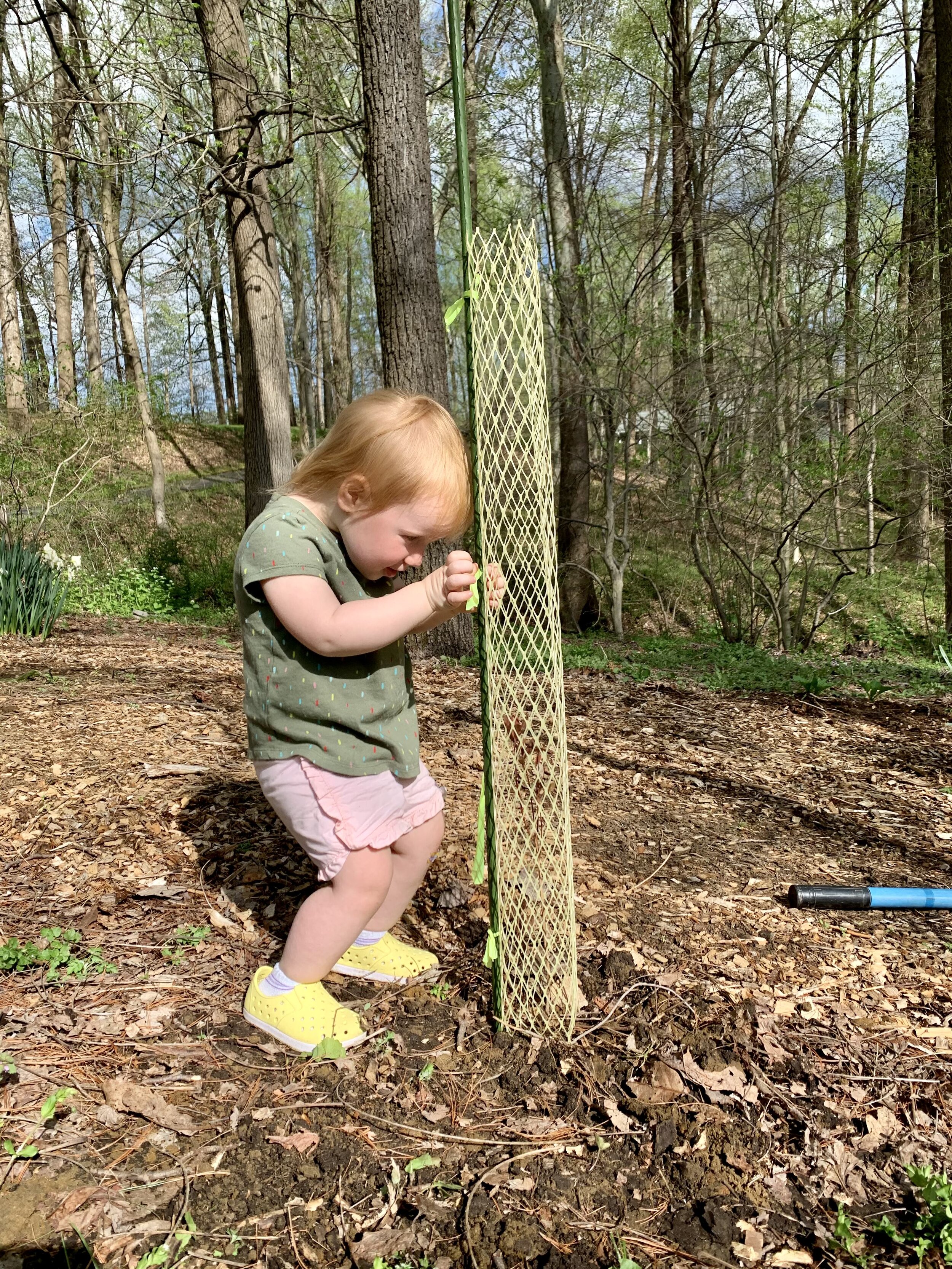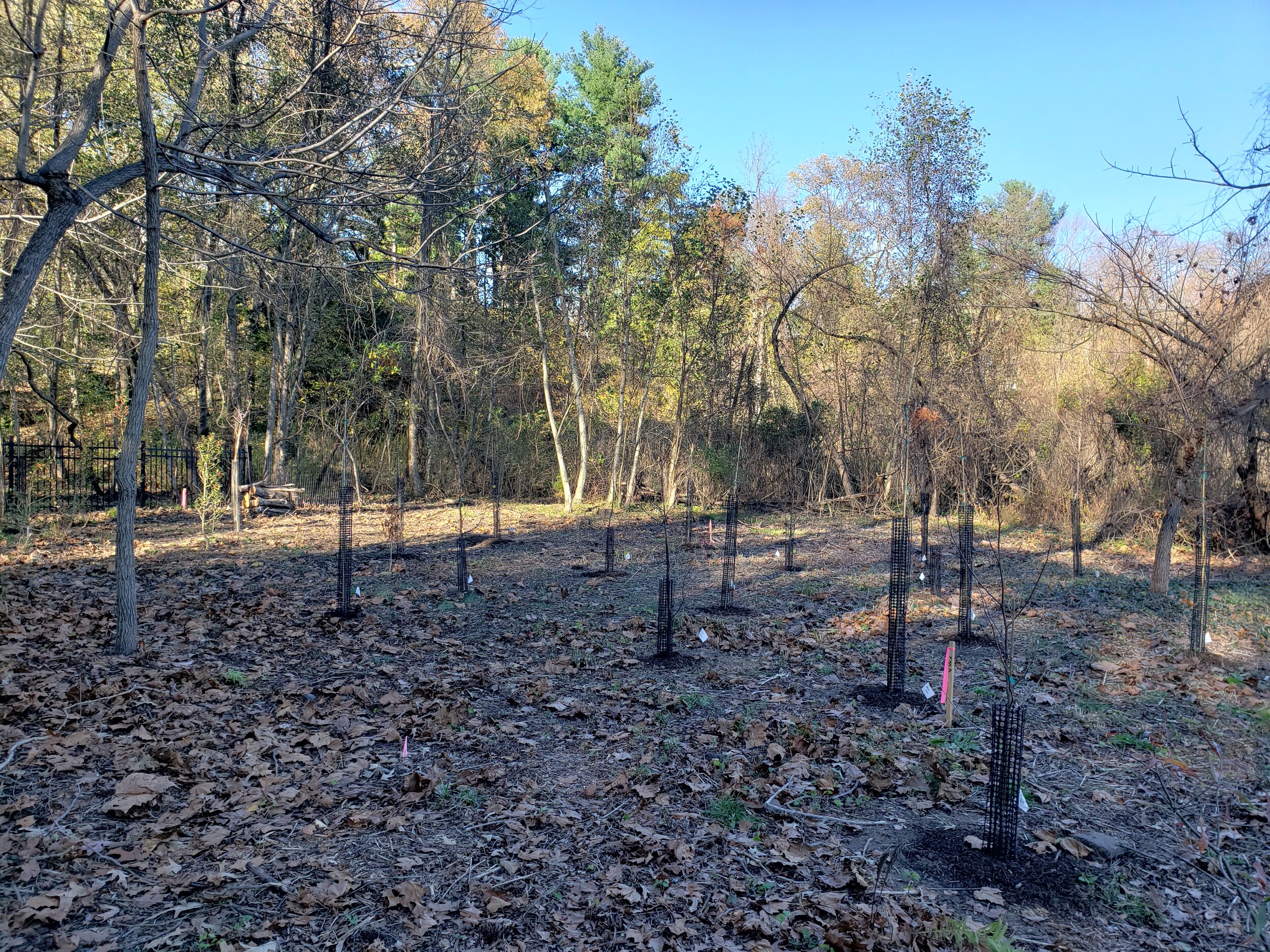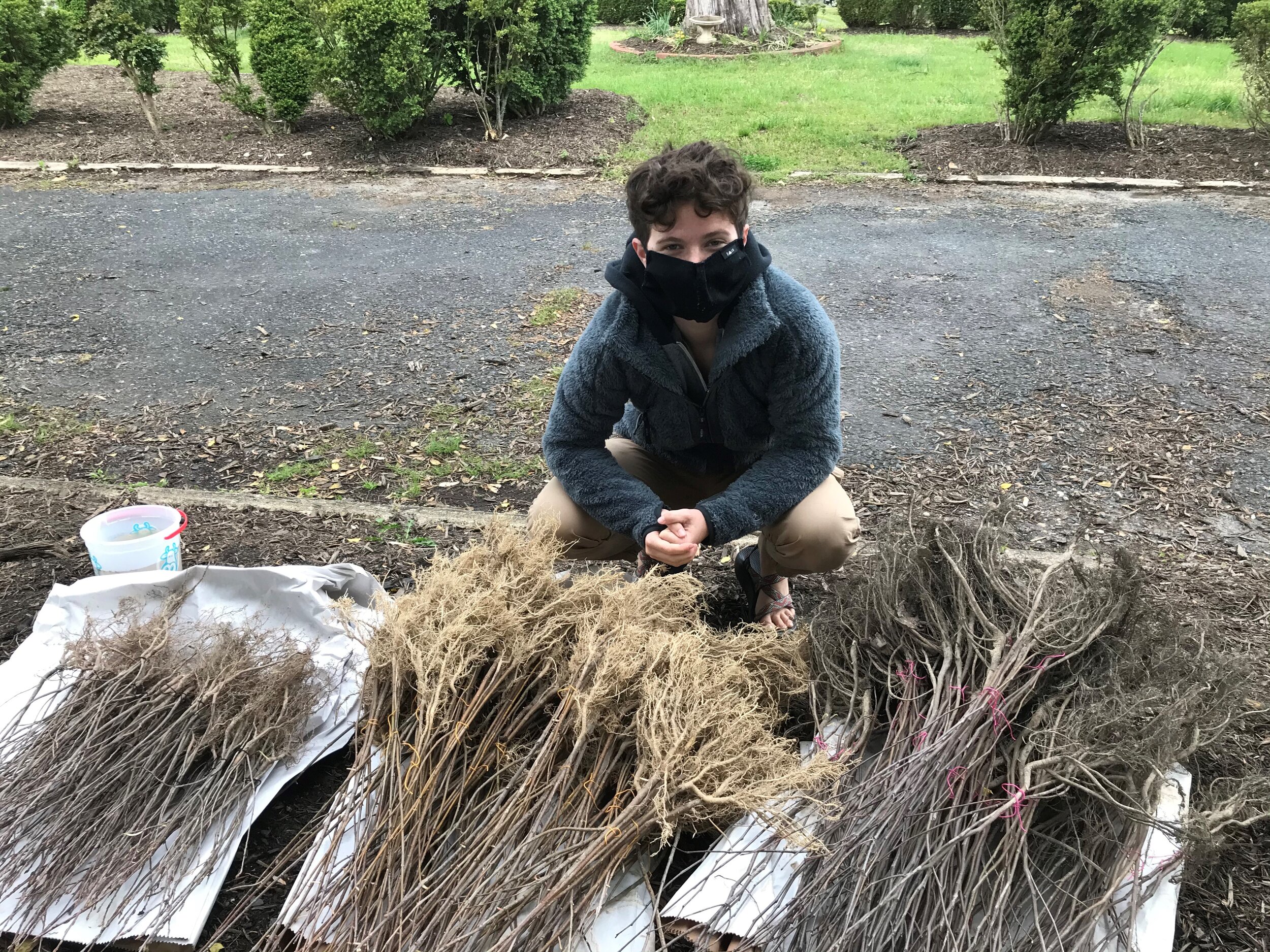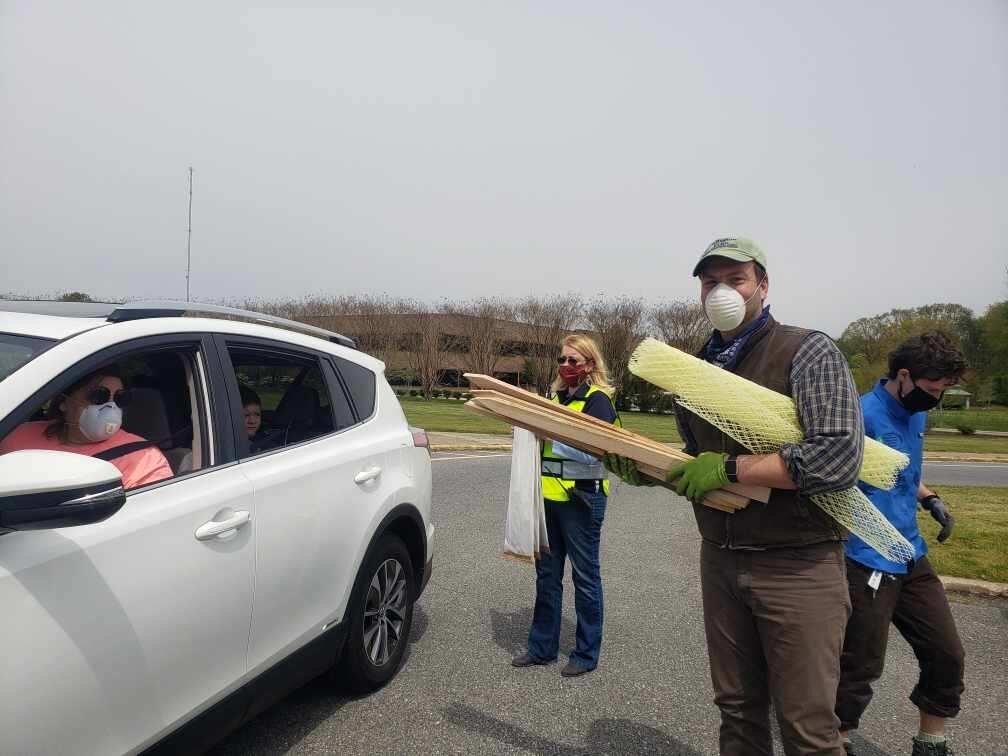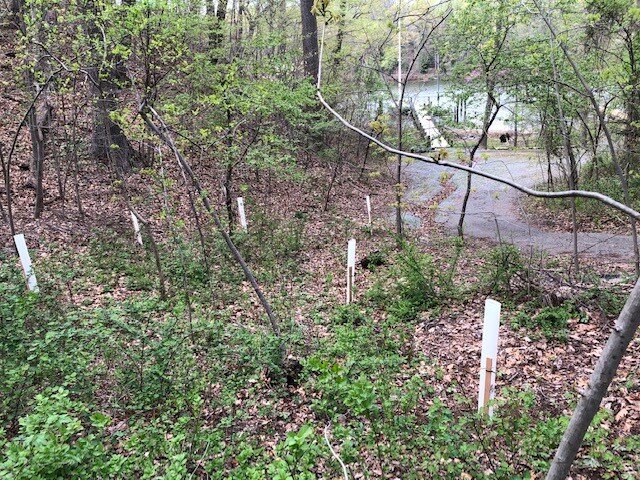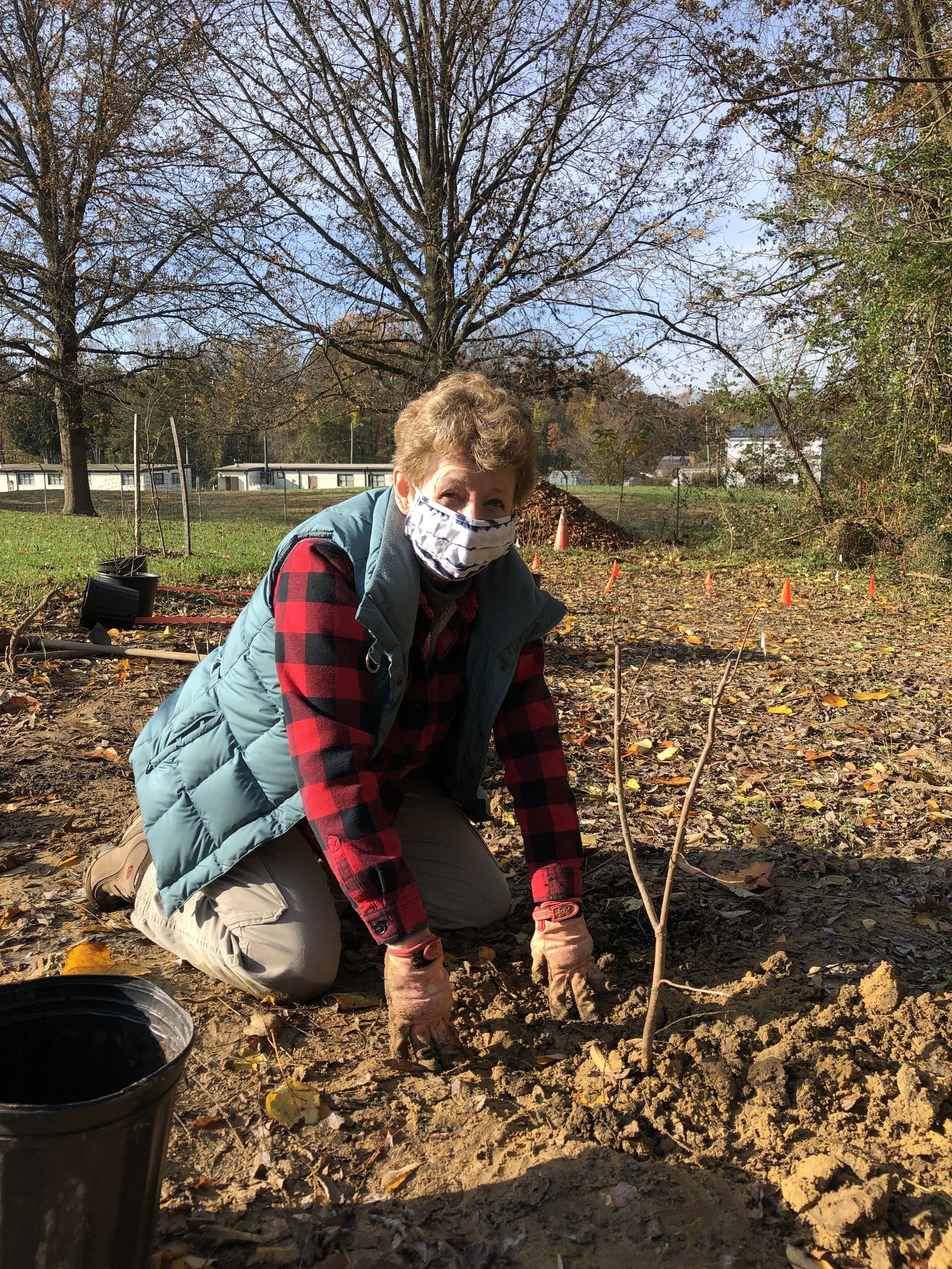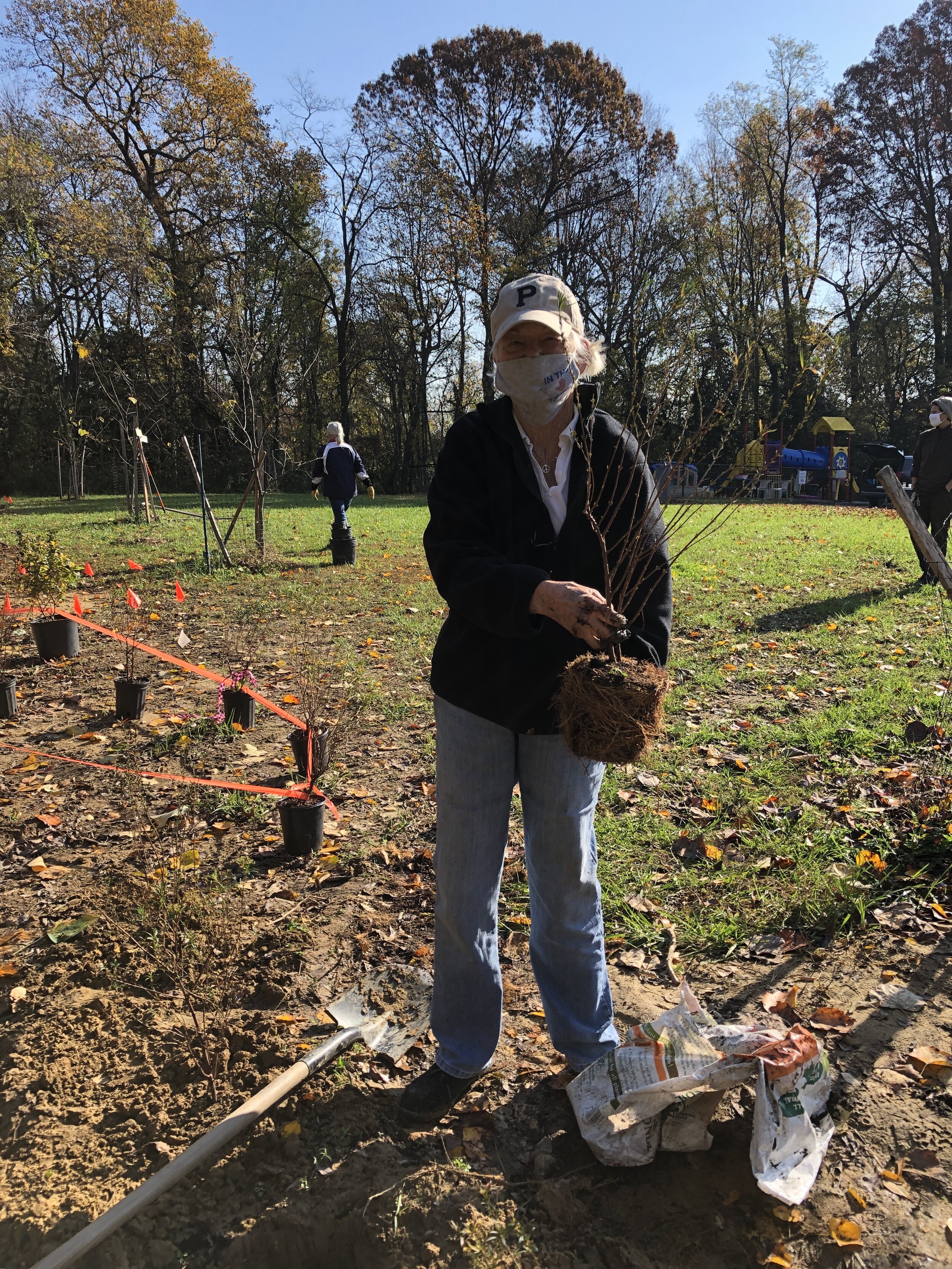Since Spring 2020, several North County Stewards have been supporting project maintenance efforts at Empowering Believers Church of the Apostolic Faith in Glen Burnie.
Apostle Larry Lee Thomas and Steward Dawn Taft
After connecting with the congregation's Steward Roz Davall at WSA's 2020 Spring Into Action Conference, Stewards Candy Dayton and Dawn Taft--founding members of AAPRA, the Anne Arundel Patapsco River Alliance--began visiting the site on a regular basis with other volunteers. Together, they have helped maintain one of the congregation's restoration projects by weeding, adding plants, and incorporating new elements for a rustic seating area.
Over the past year, the relationship between these Stewards and Empowering Believers has blossomed into what the church's pastor, Apostle Larry Lee Thomas calls a "love connection." Apostle Thomas shared recently, "I think this relationship captures the unity that's happening in order to move projects ahead. We are building diversity, addressing a lot of the things in WSA's strategic plan, and that is part of this love connection. We can see every aspect of our community engaging in this wonderful project. #loveconnection #dreamteam!"
For years, Candy, Dawn, and a small group of AAPRA volunteers have met every Tuesday in the late afternoons of spring through fall to care for the rain garden at Candy’s church, Faith Baptist in Glen Burnie. When their team realized they had the capacity to maintain an additional site at a neighboring congregation, they adopted one of the projects at Empowering Believers.
What’s the secret to their successful project maintenance? Candy shared, “Our first tool is prayer. 😊 Next keep the commitment short. We shoot for one hour, one day a week…Don't be discouraged if you are the only one who shows up…For years it was just me, then Dawn joined me, then Lauren Biddinger and Thom Marston…If you can get four knowledgeable people working for an hour, a lot can get accomplished.”


